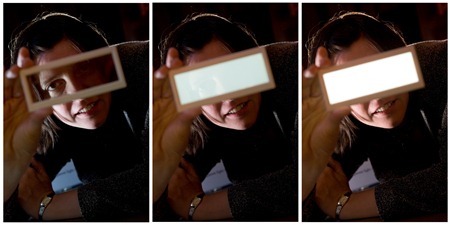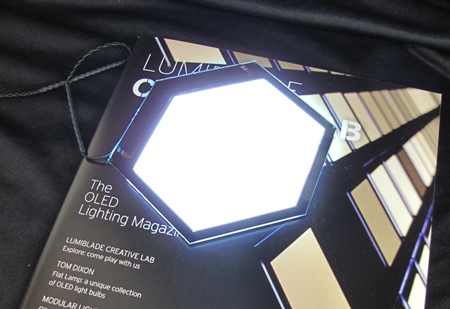Picture yourself in a car with a transparent roof. You have just finished a long commute; and you take a moment to switch off your car’s engine to enjoy a view of the stars from your driver’s seat. Now, imagine that you accidentally drop your keys into that frustratingly impossible-to-reach crevasse between the seat and the console.
If you were in any other car, you would curse the inability of your interior lights to illuminate the dark expanses of this key-devouring abyss. But, this car is special. When you need light, you simply switch on your light-up moon roof, which is made of organic light emitting diodes (OLEDs) that give off a soft, ambient glow inside the car.
As futuristic as this scenario sounds, it could actually be closer to reality than you think. The OLED car roof concept is the product of a collaboration between Dutch electronics manufacturer Philips and German chemical giant BASF. An OLED is a light-emitting diode (LED) that contains a layer of organic semiconductor material that emits light in response to an electric current between two semiconductor layers. The car roof concept is based on Philips’ Lumniblade OLED technology.

Using dyes developed by BASF, the team has engineered highly efficient OLEDs that are just 1.8 millimeters thin. The lights are so thin that they can be made to appear transparent. The concept is engineered to provide light within the vehicle when turned on, and remain transparent while switched off, allowing the driver to see outside the vehicle. The transparent OLED structure can also be “sandwiched” with transparent solar cells to provide solar charging capabilities.
“This combination allows the driver to enjoy a unique open-space feeling while it generates electricity during the day and pleasantly suffuses the interior with the warm light of the transparent, highly efficient OLEDs at night,” said Dr. Felix Görth, head of Organic Light-Emitting Diodes and Organic Photovoltaics at BASF.

The two companies have been working together, as part of the German Federal Ministry of Education and Research’s OLED 2015 Initiative, since 2006. Last year, the team marked the second phase of the initiative by launching the “TOPAS 2012” consortium project. “TOPAS” stands for “thousand lumen organic phosphorescent devices for applications in lighting systems.” In this project, the partners will focus on developing new materials, component architectures, and new production machines for OLED lighting solutions.
Although these technologies might not be quite ready the next time you drop your keys between the seat and the console, they could be the future of automotive lighting.